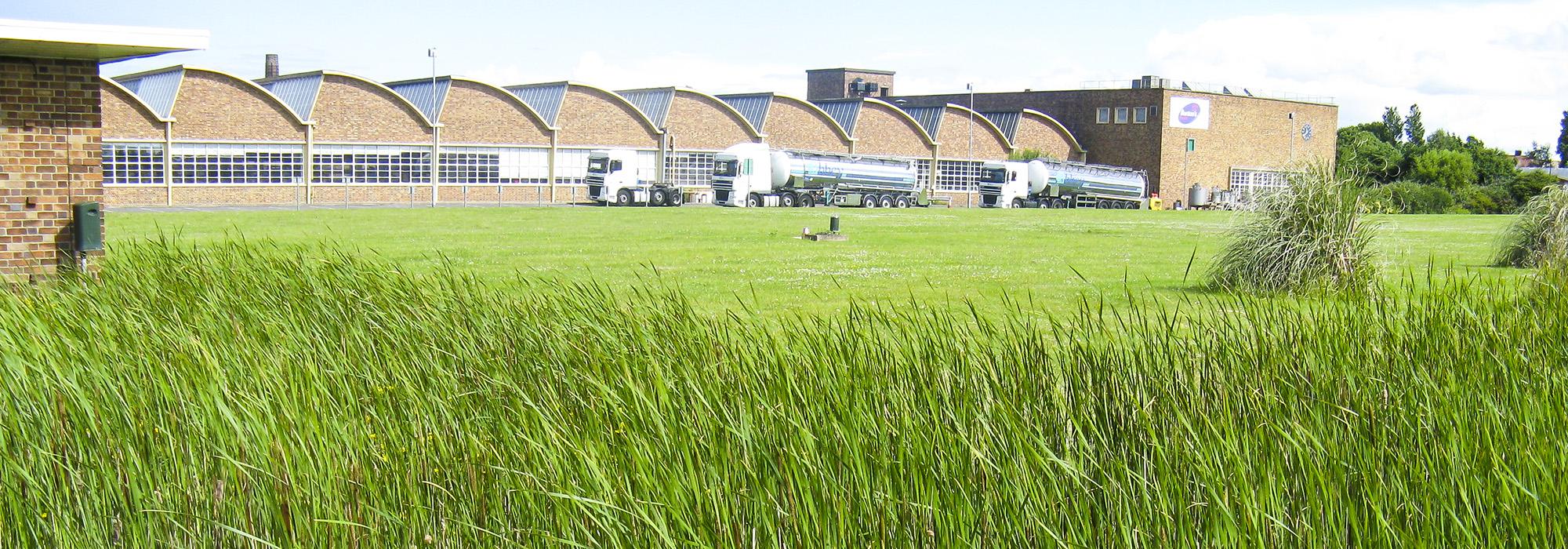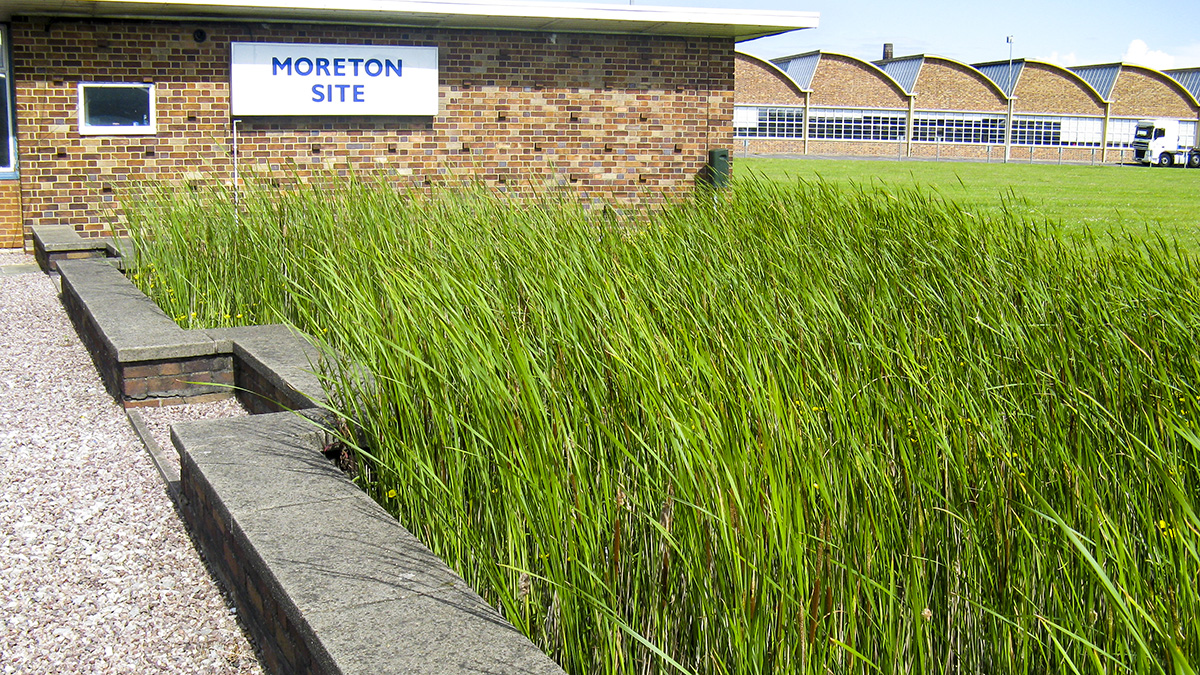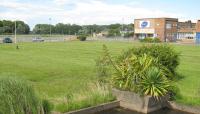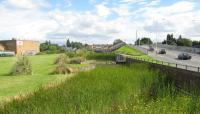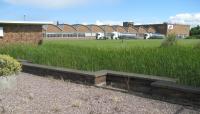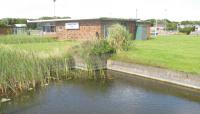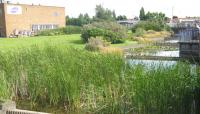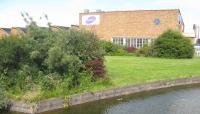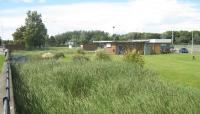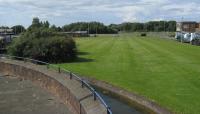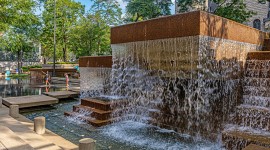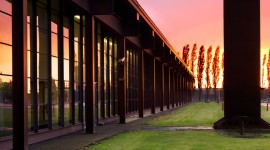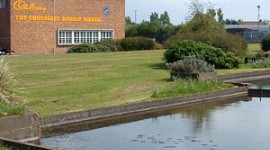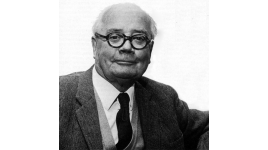Landscape Information
Located approximately half-a-mile south of the Irish Sea on the northwest coast of England, this property was developed as a factory for the Cadbury Bros. Ltd. (now Burton’s Biscuit Company) in 1952 by Geoffrey Jellicoe. Its location was chosen by Cadbury since it was a few degrees cooler than its main factory near Birmingham. Jellicoe transformed the poorly drained site, which was subjected to strong coastal winds, by siting structures and planting trees to act as wind breaks and to enhance spatial definition. He partitioned the site into units that he envisioned could be utilized for factory extensions, playing fields, or housing. Jellicoe utilized excavated spoil to create a serpentine mound, with newly planted trees running along the entire east-west axis, to the north side of the factory structures. Jellicoe sited ten pools with nine cascades and four balconies parallel to the main, north-south oriented road of the factory. Meant to evoke an eighteenth century ha-ha, the watercourse is both a functional barrier and an aesthetic feature, creating the illusion of a false perspective. Jellicoe significantly chose not to locate the water feature at the site’s main entrance, but instead along the route that factory workers walked to and from the nearby train station. The project was completed in 1954; approximately a decade later Jellicoe assigned metaphorical and symbolic meaning to several of the landscape features.
The factory was taken over by Burton’s in 1986, closed in 2011, and demolition underway in 2019. The surviving watercourse, including its associated retaining wall, viewing platforms, railings, and planters were listed as Grade II on the National Heritage List for England in 2020.



